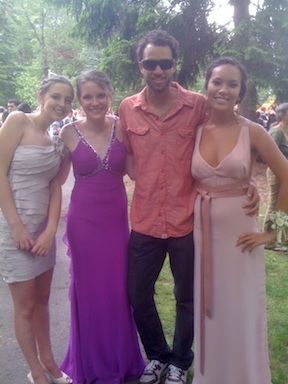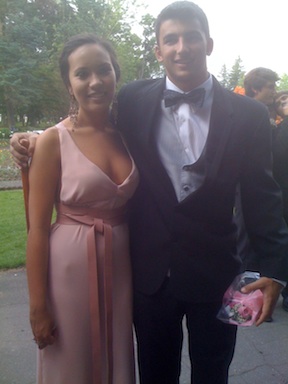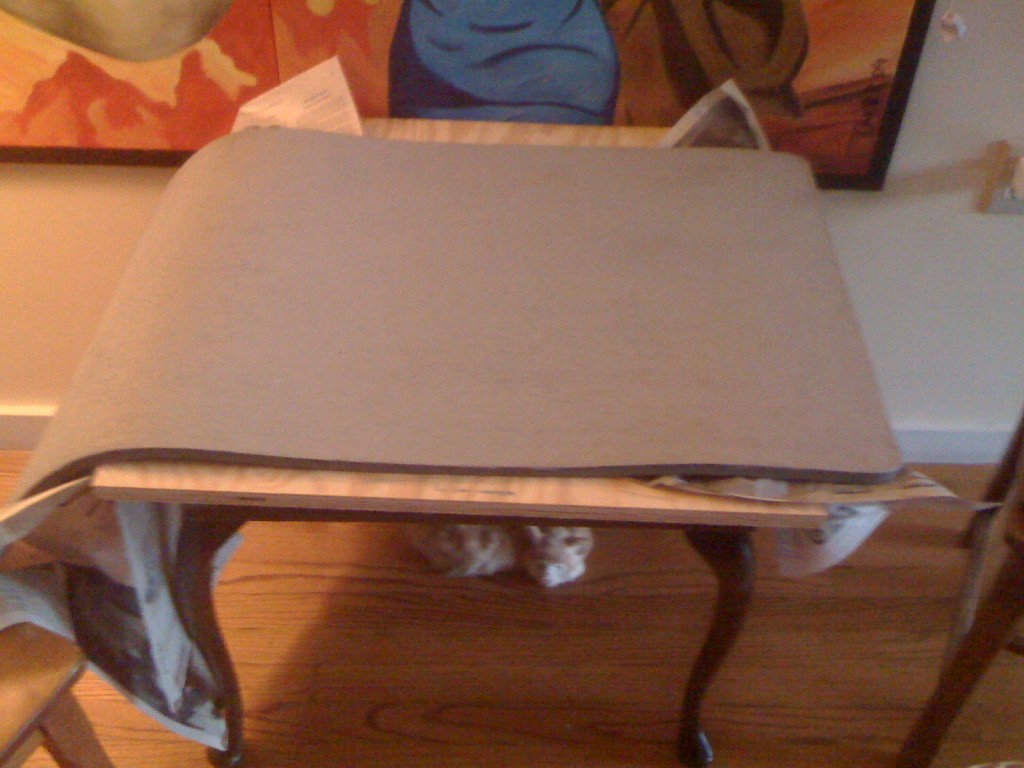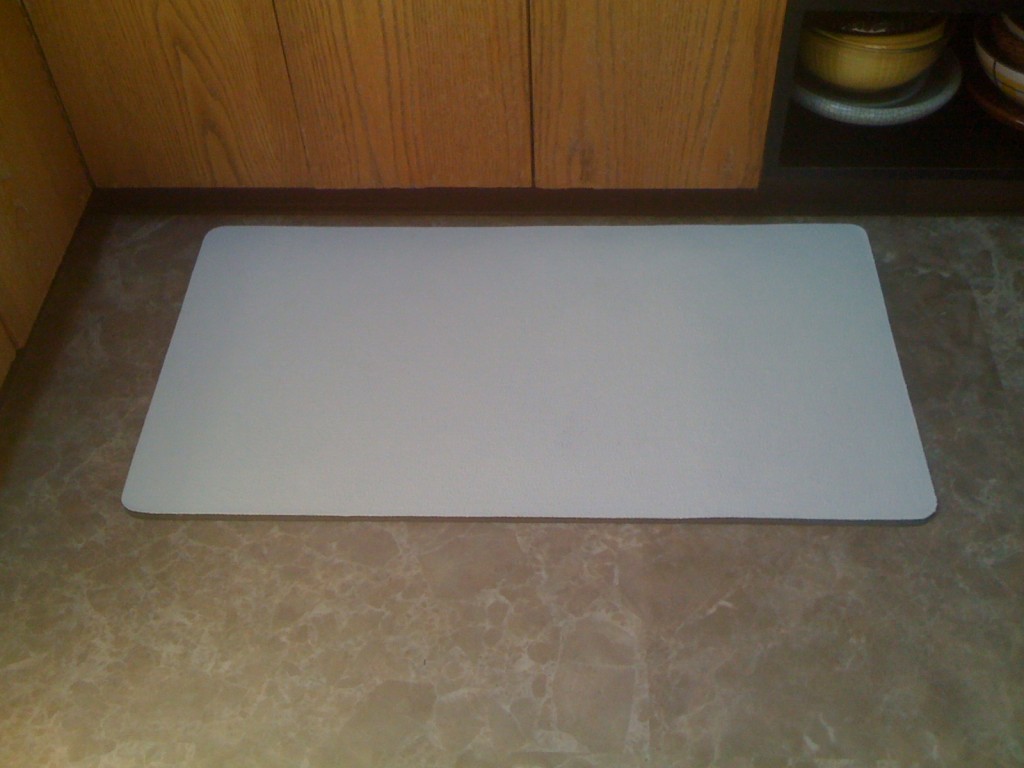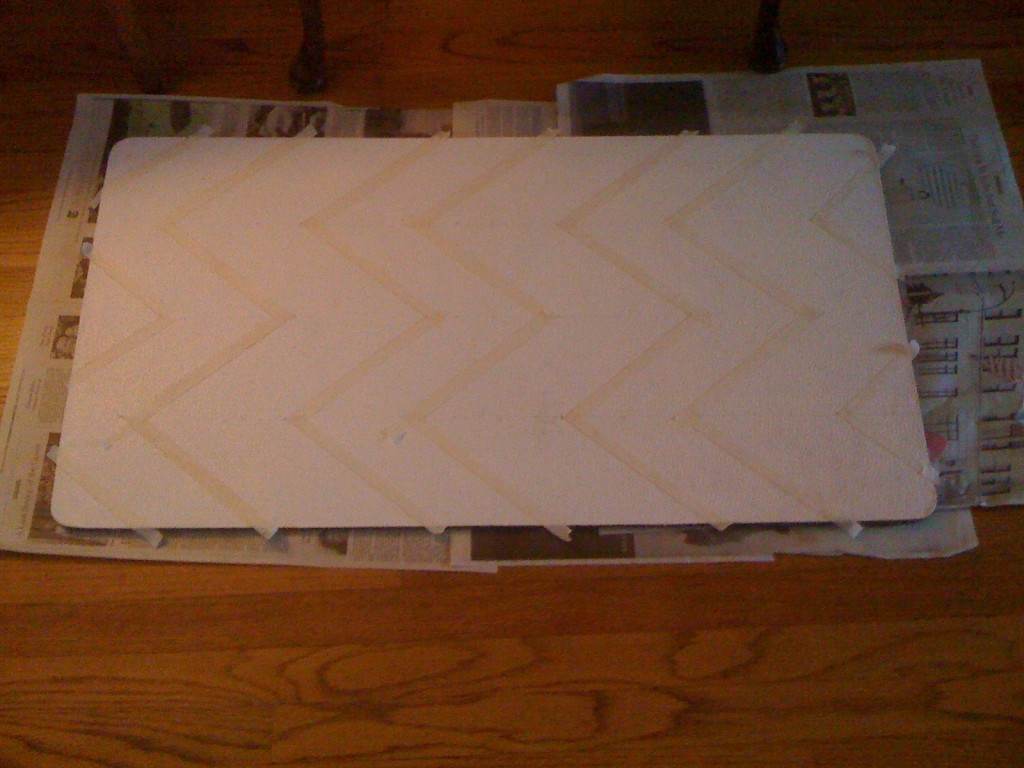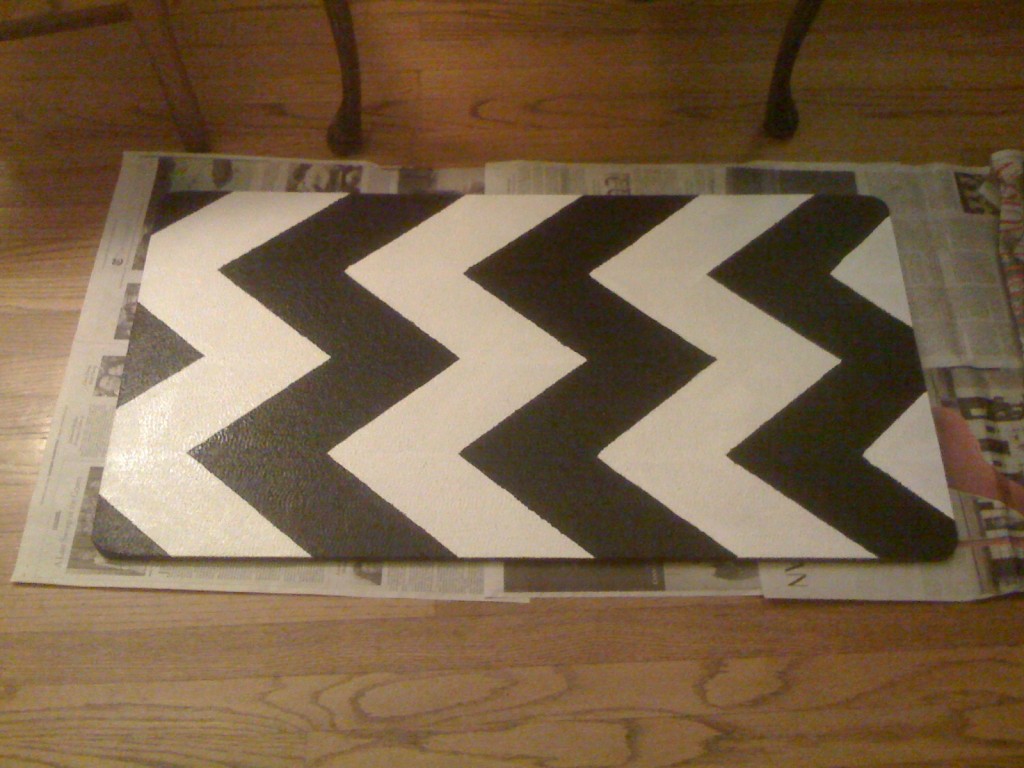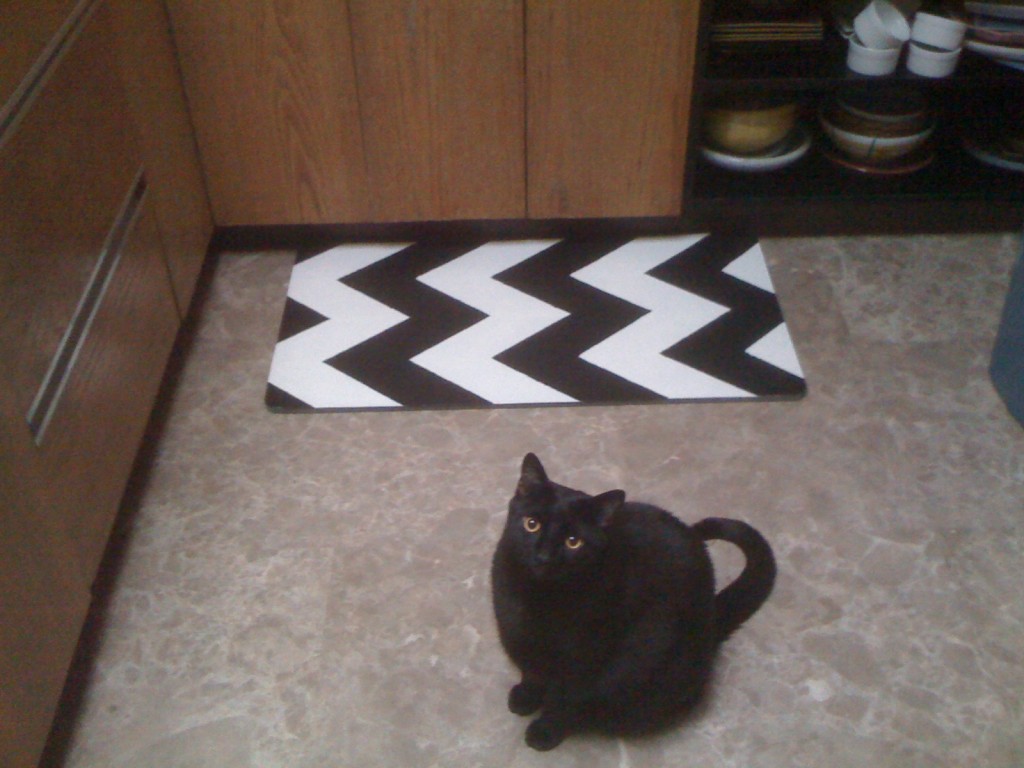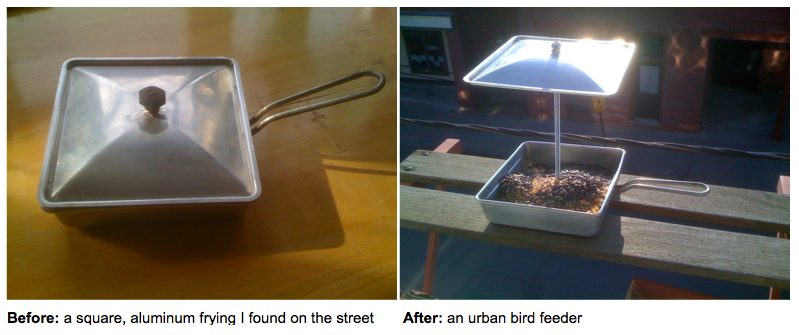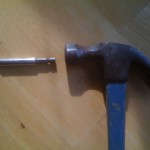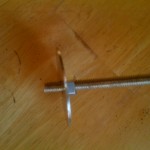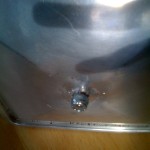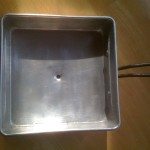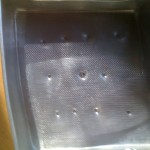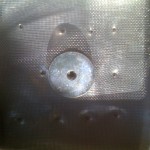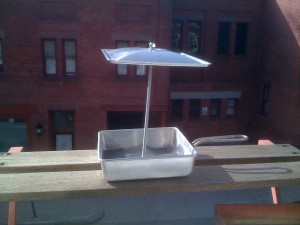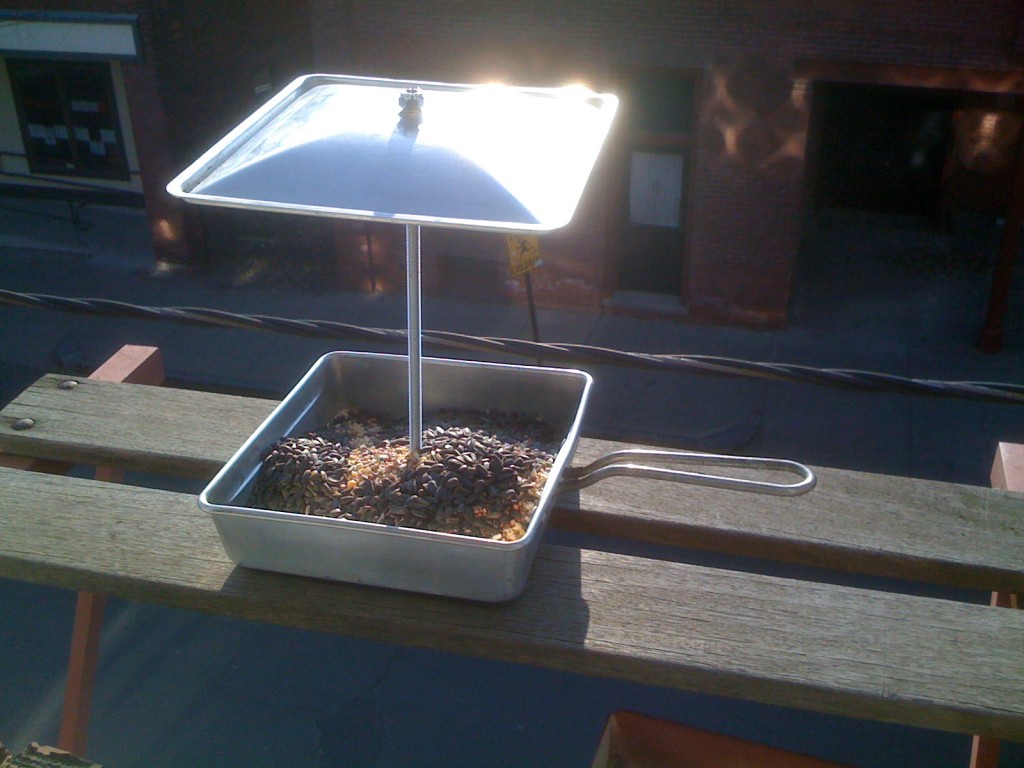Ever since I painted my old kitchen rug with bold chevron stripes, I’ve been thinking about painting my vinyl bathroom floor tiles. So, I gave it a go and it turned out even better than I thought. Note: I used porch and floor paint from my local hardware store so as to have a durable finish that will withstand the traffic the floor will be receiving and the whole process cost: $75 along with 6 hours of my time [not including the final drying which was an additional 8 hours, overnight]. We were able to walk on the entire floor 30 minutes after the final coat of paint. I waited the entire 8 hours before putting anything down onto the newly painted floor.
Bathroom Vinyl Tiles Before:
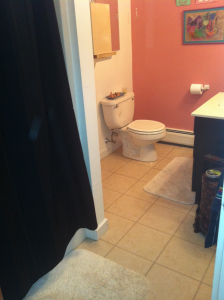
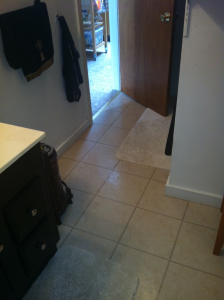
Here is what the bathroom floor looked like before. This vinyl floor tile was laid directly over old linoleum and the job was, well, let’s just say, did not appear to be completely professional. Added to that, the old, tired swirly pattern in a dull beige…and I think you can start to get the picture.
Step 1 Preparing the old vinyl: I sanded the vinyl floor tiles with a 180 Ct sandpaper. After sanding I vacuumed the whole area.
Step 2 Creating tooth on the old vinyl: I deglossed the vinyl floor with a deglosser liquid. This is is a somewhat caustic process, so be sure to wear protective eye wear, gloves, and be sure the area in which you are working is well ventilated. I had the overhead fan on the whole time and had another portable fan pulling fresh air into the bathroom. The deglosser is applied with a clean cloth and removes any gloss finish the sandpaper didn’t get. Steps 1 & 2 creates the ‘tooth’ from your old vinyl tiles and prepares the surface to accept the new primer and paint.
Step 3 Painting prep: I used painter’s tape and taped off the areas I didn’t want the paint to adhere to.
Step 4 Priming the vinyl: Primer is then applied. I used 2 coats and laid each coat on somewhat thinly. It took about 45 minutes between each coat to dry. Check the label on your printer and follow those steps. The primer is an important step that prepares the vinyl surface for painting. I used disposable sponge paint brushes, however you could use a roller or traditional brush.
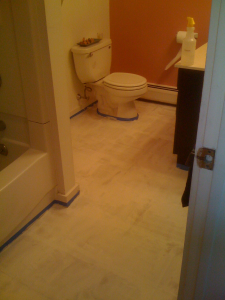
Step 5 White base coat: Since I wanted black and white squares, I next painted on the white base color, over the primer. This time I used a disposable sponge brush and a small roller. The white paint took 2 coats and I allowed 45 minutes between coats for drying.
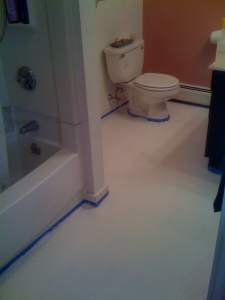
Step 6 Creating the black squares: Taping off the squares was the most time consuming process. I followed the old tiles, as my guide, and taped off the tiles I wanted to maintain the white color.
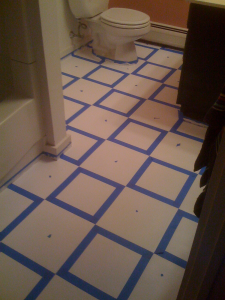

Step 7 Painting the black squares: Next I applied the black paint with another disposable sponge brush. In order to get the density of black I desired, I applied 2 coats of black, waiting 30 minutes between coats. After the second coat of black paint went down, I waited another 30 minutes, then pulled up the painting tape.
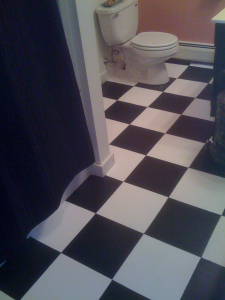
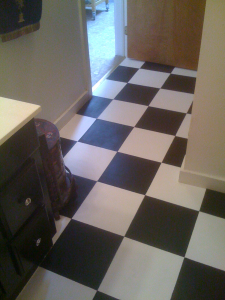
That is all that is needed. Except I did go in with a small paint brush and touched-up a couple of areas where the black paint had seeped under the painters tape.
One last time: Painting over vinyl tiles.
Before After


The whole bathroom appears bigger, cleaner and the eye is fooled into thinking these are actual tiles, when I just painted over the old vinyl floor tiles.
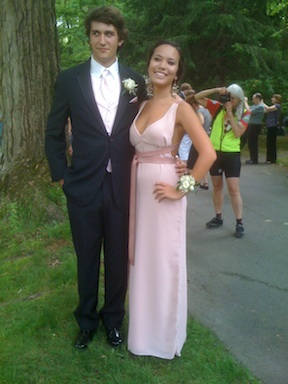 the back of the dress looks like this:
the back of the dress looks like this: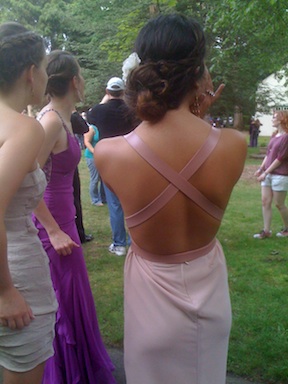 I lined the entire dress and created the straps by cutting and gluing vinyl strips together.
I lined the entire dress and created the straps by cutting and gluing vinyl strips together.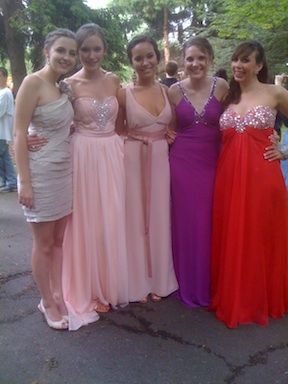 Even Brendan happened to be in town:
Even Brendan happened to be in town: And Mr Harp:
And Mr Harp: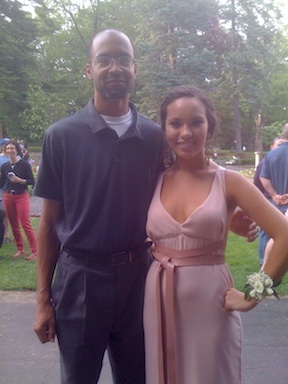 And Xernay’s friend:
And Xernay’s friend: